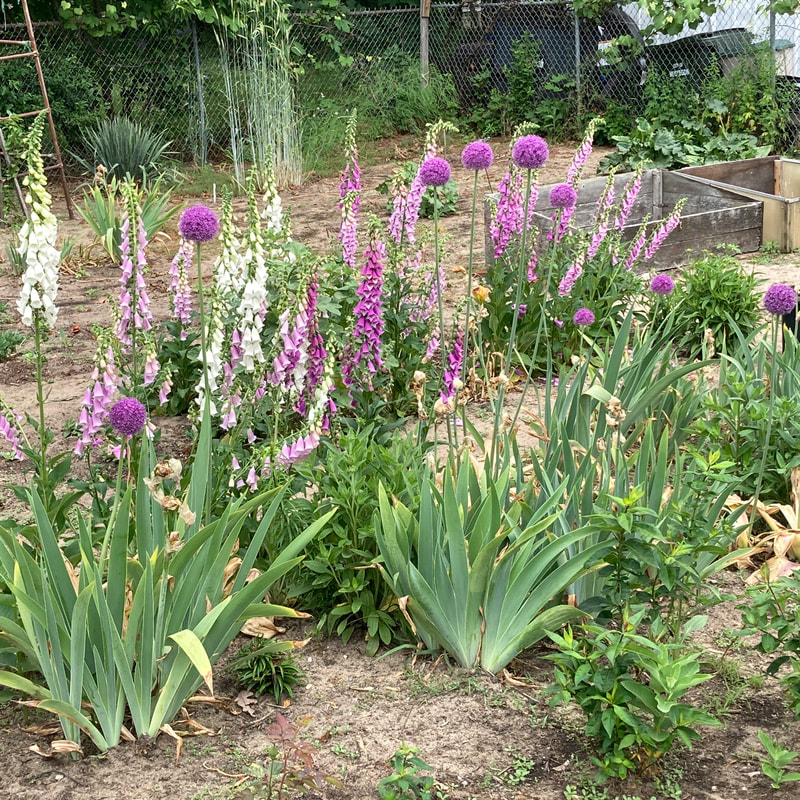|
Photo and article by Donna Iverson There seems to be an infinite number of new ways to garden: pollinator gardens, water gardens, native plant gardens, matrix gardening, xeriscape gardening, and hydroponic gardening. But some people, like a neighbor, just plant lots of their favorite flower. In his case, it’s foxglove. And it makes for a beautiful nostalgic sight. Foxglove is not native to North America. It was brought over by English and German immigrants. Pioneers brought it with them as they settled the west. Today it is found predominantly in the Upper Midwest, New England, California and the Southwest. Like many flowering plants, its seeds disperse easily and it can be found growing wild along roads and forest clearings. A prolific self-sower, it creates colonies of pink, lavender, and white colored spikes that bloom in May and June. As early as 1768, it was discovered that foxglove had medicinal qualities. It produced a chemical called digoxin, which was, and still is, used as a heart remedy. Foxglove's scientific name is Digitalis purpurea. Ironically, eating digitalis is highly toxic to humans and animals. Listed as a biennial/perennial, a foxglove garden lends an air of mystery to a yard. Along with the globe thistle in the neighbor’s yard, it evokes an Old World look. As for growing, it prefers a combination of sunshine and shade. It will tolerate poor soil. It is a low maintenance flower that attracts both bees and hummingbirds. Companion plants include phlox, cornflower, lobelia and globe thistle.
0 Comments
Your comment will be posted after it is approved.
Leave a Reply. |
Archives
April 2024
Categories |

 RSS Feed
RSS Feed